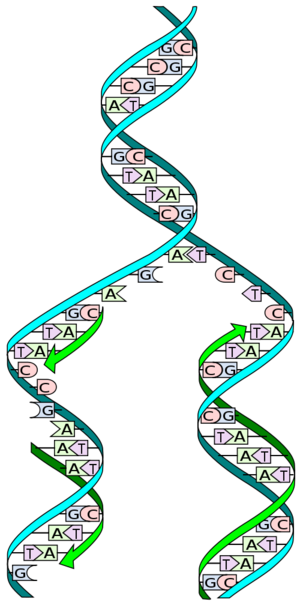Synthetic Genetic Polymers Capable of Heredity and Evolution is the title of a journal article appearing in the April 2012 issue of Science. The researchers reported the findings of a project in which they created synthetic DNA, called XNA. The X stands for “Xeno,” a term meaning “alien.”The XNA created exhibits all the characteristics of DNA and RNA including the ability to replicate.
It is this capability that represents the significant breakthrough in this research. Scientists have been experimenting with synthetic DNA molecules for more than a decade. But in the research led by Philipp Holliger and Vitor Pinheiro, at the Medical Research Council Laboratory of Molecular Biology in Cambridge, United Kingdom, the research team was able to create synthetic DNA capable of duplicating allowing it to evolve. To achieve this the research team created six special polymerases that synthesized XNA from DNA and then copied the XNA back into DNA.

This is the essence of how evolution works. As DNA and RNA molecules replicate small errors over time appear. These errors alter the genetic code that underlies life here on Earth.
With XNA able to evolve through replication researchers can begin to understand how life started. The fact that XNA can do what DNA and RNA do suggests that there may have been other life creating molecular systems that predated or competed with them. Imagine life starting either here on Earth or somewhere in the Cosmos with competing forms of self-replicating molecular structures duking it out for supremacy. Here on Earth DNA and RNA were the winners. Could there be an XNA elsewhere leading to entirely different life forms? The research suggests the evidence is there.
Short of potentially creating life from exotic biology is there a practical value to the research? By developing XNA medical researchers can begin to explore ways to use it in therapeutic medicine, particularly in the development of nucleic acid treatments with modified DNA sequences that are self sustaining to target diseases. Current research in this area has been unable to create molecular-based treatments because the natural occurring DNA and RNA molecules breakdown before reaching therapeutic targets. The work on XNA should allow biomedical researchers to develop new anti-angiogenic medicines. Currently there is only one and it is used to treat macular degeneration.









Good read…
Len some where in DNA/RNA proteins may play a role. I’m no expert but proteins are an essence of life and XNA may need a protein boost. Ok back to Twitter …hmmm Barcelona lost to Chelsea, a Brazilian made the difference and a Spaniard drove the sword, pure Latino flair man !!
Proteins play an enormous role in DNA and RNA replication. You may find the following blog article of interest as well. https://www.21stcentech.com/biomedicine-part-2-the-evolution-of-computational-biology/
Great post!
I remember when I heard for the first time about “genoma”, it was so impressive that I thought we would have our own cake recipe for each person in the world like in 5 years or so… after this while, I’m getting a bit hopeless about having my own genetic map printed before I die.. it seems the more tecnology and science progress more political/financial/etc.. stuff get in the way to release it to the average people.
Hi Fernando, You can win your own genome map today on eBay but if you are prepared to pay for it, current best price is around $1,000. That’s down from $300,000 in 2008 so it’s a pretty good deal. You can also choose to get a partial genome map with companies like Biobase who offer Genome Trax, identifying the areas within your genome that are most commonly associated with disease from mutations. Right now, however, only hospitals, research institutes, schools and some commercial service providers can purchase their service.